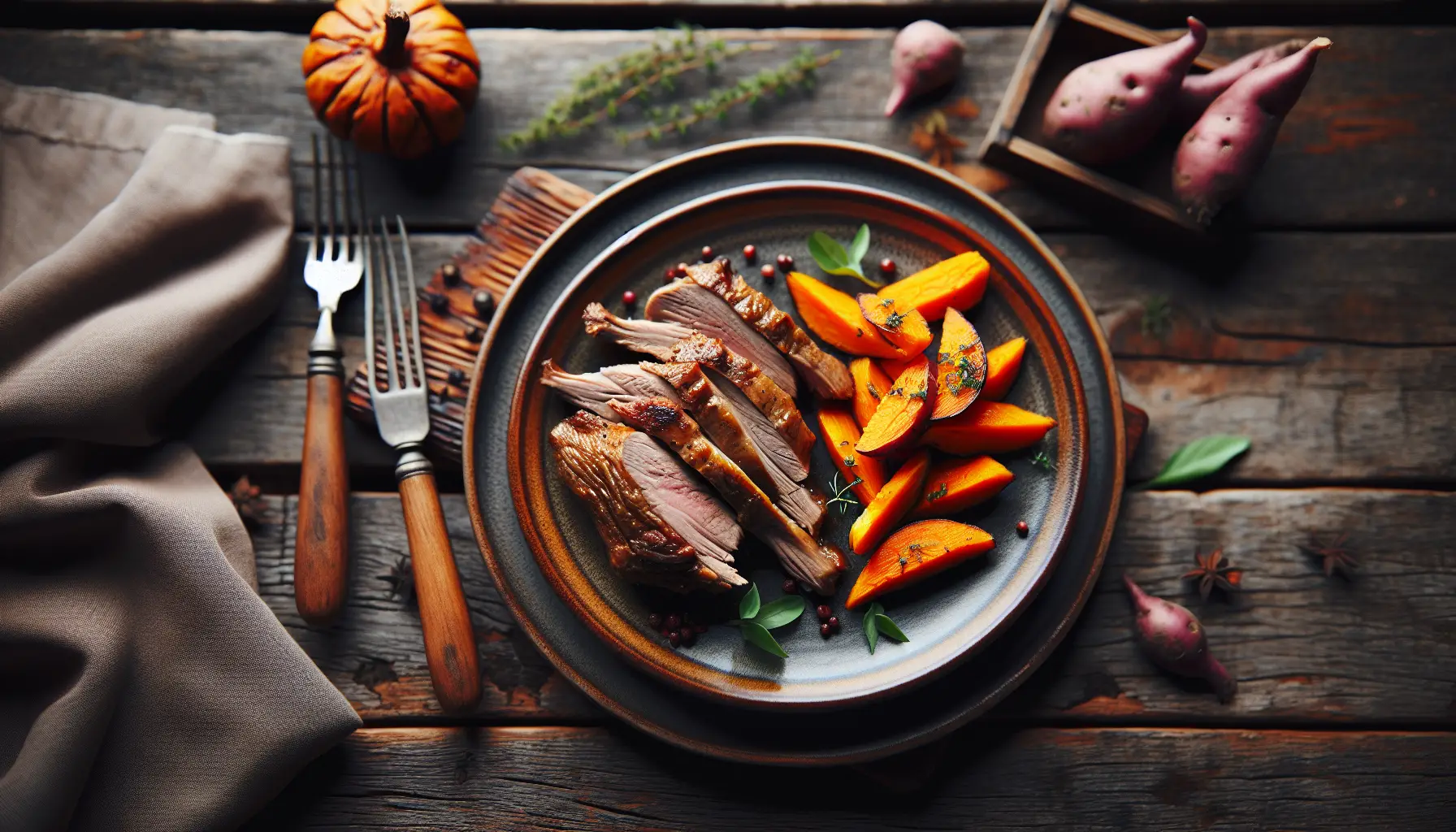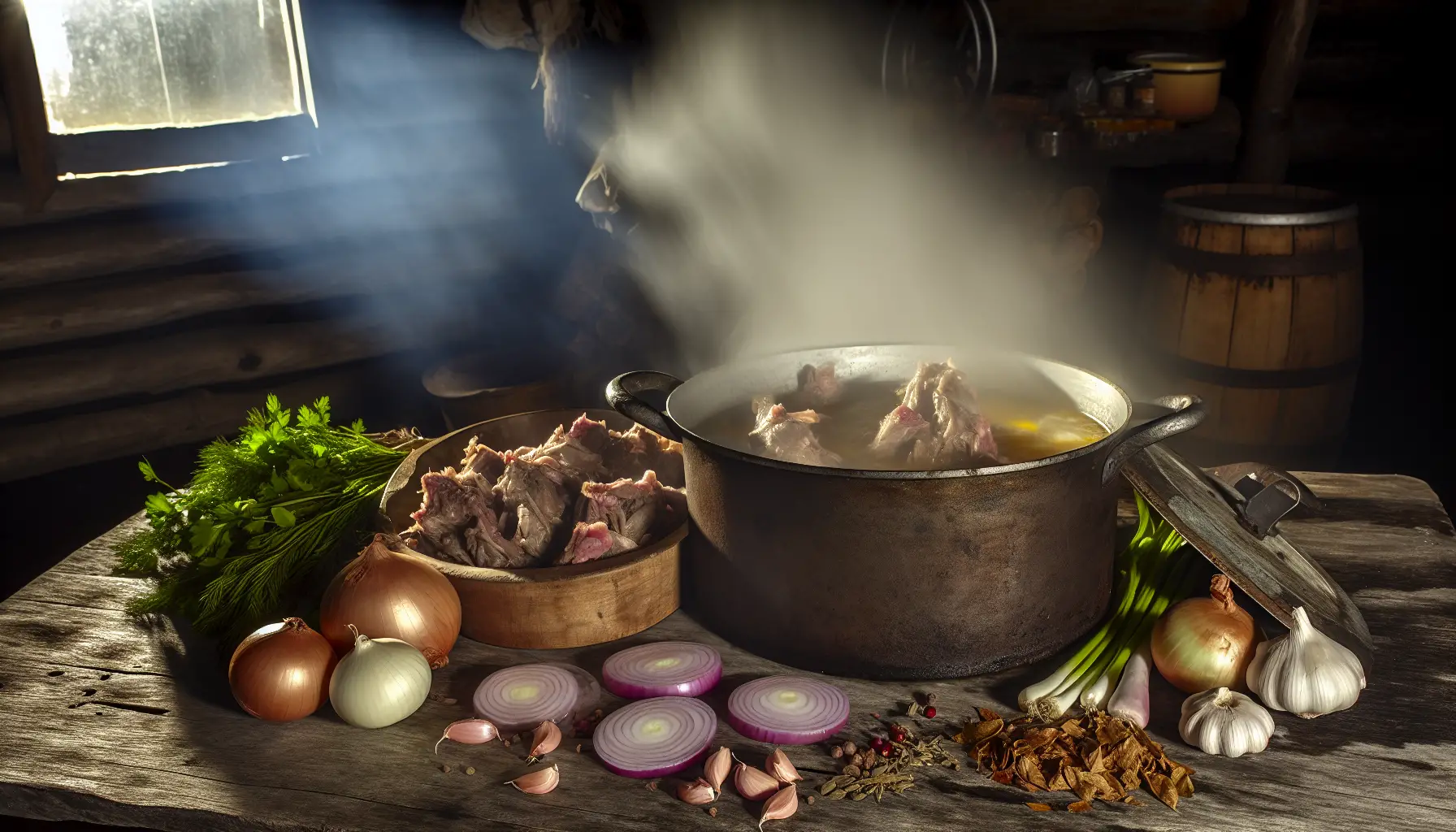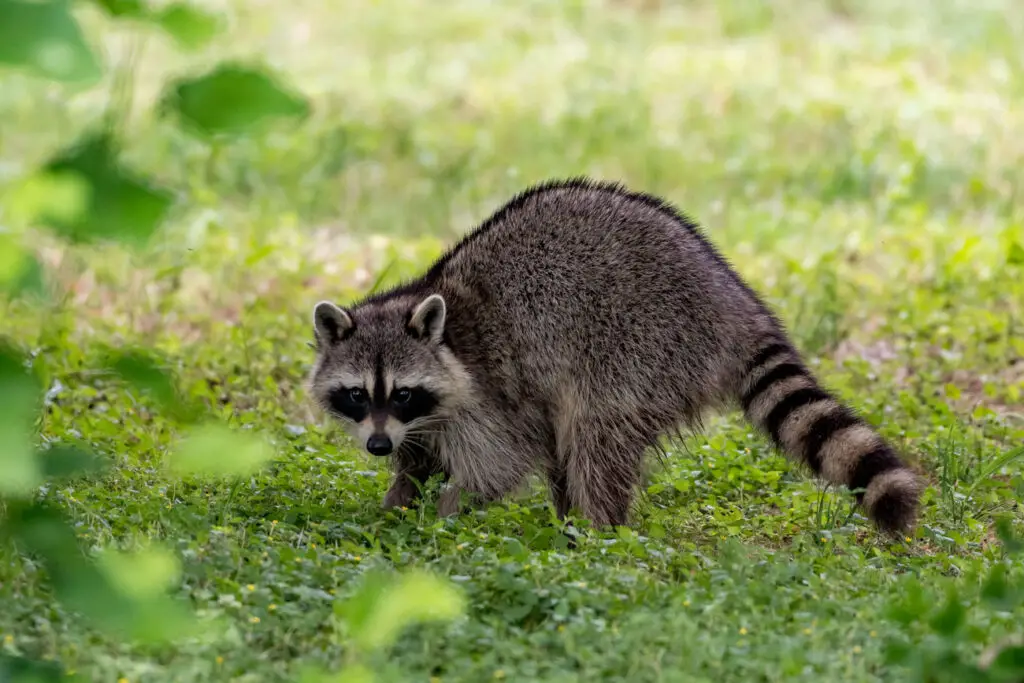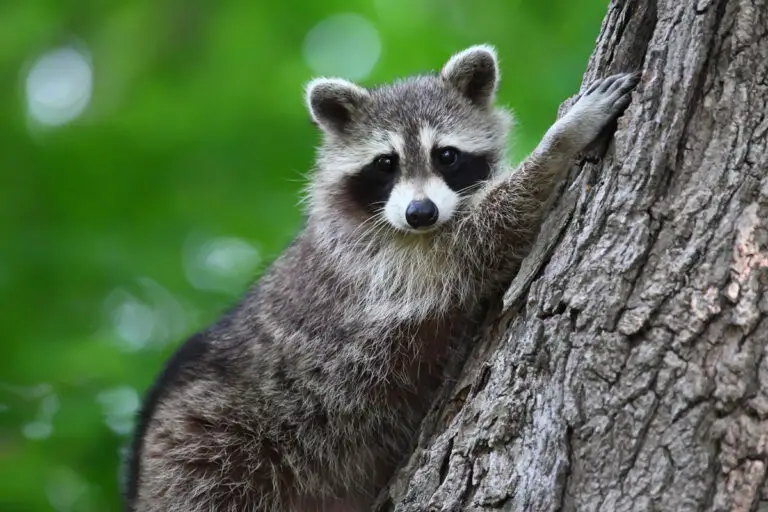Ever found yourself wondering, “can you eat raccoon?” If the chirpy wild raccoons scampering around your backyard could be the next star of your dinner table, then well, buckle up, my adventurous foodies, because we’re going on a culinary journey exploring the wild game that is raccoon meat!
Key Takeaways
Raccoon meat is a tasty culinary reality with legal considerations to be aware of.
Properly handle and cook raccoon meat to prevent health risks, as it was once a popular Southern delicacy.
Wild game enthusiasts are interested in trying new flavors like raccoon, but the future of its cuisine remains uncertain.
Raccoon Meat: A Culinary Reality or Myth?

When you think of raccoon meat, you may conjure up images of a wilderness survival situation or a quirky cooking experiment. But here’s a fun surprise: raccoon meat has a taste profile akin to dark chicken meat, resting on the palate with a mild, pleasing flavor, especially when paired with sweet potatoes for a hint of sweetness.
So, is the consumption of raccoon meat a culinary reality or just a cooking myth spun around the southern dinner table while eating raccoons?
Legal Considerations
Hold on before you head to the backyard with your trapping kit. It’s time to discuss some legal aspects. Every state has its own rules for hunting raccoons. For instance, California and Massachusetts have specific seasons and trapping regulations, while Iowa allows year-round hunting. In the US, it’s permissible to trap raccoons for consumption. However, adherence to guidelines on their treatment and relocation is mandatory.
And, if you’re thinking of selling raccoon meat, make sure to comply with all local health department rules and laws.
Health and Safety
Raccoons are adorable creatures, but their meat can carry parasites and pathogens. Trichinosis, a parasitic infection, and the risk of rabies are potential health concerns. Wondering how to prevent your raccoon meat from making you ill? It all depends on the right handling and cooking techniques.
Careful dressing of the carcass, using clean utensils, and cooking the meat to an internal temperature of 160°F are essential steps to a safe raccoon meal.
Culinary History
The history of raccoon meat takes us back to the Southern United States, where it was once a popular delicacy, often associated with subsistence and scarcity. The traditional way to cook raccoon meat involved skinning, cleaning, and seasoning the meat, then baking it with sweet potatoes for a classic Southern meal. However, the practice has declined due to concerns about possible contamination from urban raccoons feasting on garbage.
The Butcher’s Guide to Raccoon: From Live Animal to Meal
Have you chosen to venture into the world of raccoon cuisine? Let’s find out how to convert a live raccoon into a scrumptious dish. It’s all about identifying quality meat, dressing and cleaning it properly, and storing it safely before cooking.

Identifying Quality Meat
The first step is to select a healthy, well-fed raccoon. The age and size matter. Older and bigger raccoons have more fat, which can impact the taste. Also, avoid raccoons that have been feeding on harmful substances like:
cocoa products
avocado
onions
garlic
spices
processed sugars
Dressing and Cleaning
With your raccoon in hand, the next step involves dressing and cleaning it. Here’s what you need to do:
Start with a clean kill to the head.
Skin the raccoon.
Drain the blood.
Hang the carcass by its tail.
Use clean utensils to avoid bacterial contamination.
Bacterial contamination might result from mishandling and improper cleaning during the process of wounding, transporting, or handling the raccoon.
Storage and Preparation
Once you’ve dressed and cleaned the raccoon, the next crucial step is storing it correctly. Here’s how:
Wrap the meat in freezer paper.
Store it at a temperature below 0°F (-18°C) to keep it fresh until you’re ready to cook it.
When defrosting, let it thaw in the fridge to slowly reach the right temperature.
Cooking Techniques for Raccoon: Unlocking Flavor and Tenderness
Finally, we reach the exciting part – cooking! From slow cooking to traditional baking and modern culinary techniques, there’s a whole world of cooking methods to unlock the unique flavors and tenderness of raccoon meat.
Slow Cooking to Perfection

Slow cooking raccoon meat in a crockpot or slow cooker is a surefire way to achieve tender, flavorful results. Set the cooker on high and let it do its magic for 4-6 hours. You can even try some specific slow cooker recipes like Crock Pot Raccoon, Crockpot Raccoon Stew, or pulled raccoon with BBQ sauce.
Enhance the flavor with seasoning rubs, hickory smoke marinade, and liquid smoke.
Baking with Tradition
Baking is another popular method, especially among those who enjoy traditional recipes. Here’s how to bake meat:
Marinate the meat overnight in a mix of vinegar, soy sauce, and spices.
Preheat the oven to 325°F (163°C).
Place the marinated meat in a baking dish and cover it with foil.
Bake the meat for 2-3 hours.
From regional variations to old-school recipes, baked raccoon meat offers a flavorful journey into culinary tradition, with baked raccoon being a unique and delicious option.
Modern Twists on an Old Favorite
Feeling experimental? Modern cooking techniques like:
Sous vide
Molecular gastronomy
Smoking and infusing
Flash freezing
can take your raccoon cuisine to the next level. Sous vide technique helps retain the meat’s natural flavors and tenderness, while pressure cooking can result in a juicy and flavorful dish.
For a touch of fusion cuisine, try to eat raccoon in dishes like raccoon tacos, raccoon steamed buns, or raccoon fricassee.
Pairing and Serving: Completing the Raccoon Dining Experience
After perfectly cooking your raccoon meat, the next step is to focus on pairing and serving it. The right side dishes, beverages, and presentation can make your raccoon meal a truly memorable experience.
Side Dishes That Shine
Choosing side dishes that complement the gamey flavor of raccoon meat can elevate your meal to new culinary heights. Think wild rice, saucy noodle dishes, roasted root vegetables, and baked beans.
Or opt for sweet potatoes, apples, and a mix of colored bell peppers to bring a splash of color and sweetness that pairs well with the unique flavor of raccoon meat.
The Right Sip
Choosing the right beverage can augment the flavor of your raccoon dish. Depending on the flavors and seasonings used in your preparation, you might pair your raccoon meal with a refreshing light beer or a citrus-based cocktail, a full-bodied red wine, or a dark beer.
From smoky Syrah to Bell’s Kalamazoo Stout or tequila-based cocktails, the beverage world is your oyster when it comes to pairing drinks with raccoon meat.
Presentation Matters
The presentation of your raccoon dish significantly influences your dining experience. A beautiful presentation can tantalize the eyes and whet the appetite even before the first bite is taken. Consider baking your raccoon meat with root vegetables like potatoes and parsnips for a colorful display. A table setting with a mix of rustic and elegant vibes can also enhance the visual appeal of your raccoon meal.
Remember, when it comes to food presentation, colors and textures matter. So, don’t shy away from using fresh herbs, citrus zest, and spices to make your raccoon dish look more appetizing and enjoyable to eat. Just ensure to remove the scent glands before cooking, as they can affect the taste.
Raccoon on Today’s Menu: A Rarity or Revival?
After discussing the cooking and consumption of raccoon, a question may arise. Is raccoon meat a rare find on today’s menu, or is it experiencing a culinary revival? The answer isn’t as straightforward as you might think.

The Generational Divide
Elders, including some Native Americans, may have more familiarity with raccoon meat, whereas the younger crowd may show less interest in trying it. This generational divide can be seen in the differing opinions about eating raccoon meat.
While the older generation may be welcoming, young people might show reluctance due to unfamiliarity with the meat and safety concerns surrounding Big George, especially when it comes to consuming its hind legs.
Wild Game Enthusiasts’ Take
As for wild game enthusiasts, they’re all about novel and unique flavors, and raccoon meat certainly fits the bill. Some appreciate its unique taste and the adventurous culinary journey it offers, while others express concerns about health issues like parasites.
The Future of Raccoon Cuisine
Peering into the future, the destiny of raccoon cuisine remains ambiguous. While it’s not a mainstream choice and there are concerns about how hunting raccoons might affect their population and the environment, the potential for a culinary revival still exists as more people explore unique and sustainable food sources.
Although it’s not common to see raccoon meat on restaurant menus, there have been instances where adventurous chefs have dabbled in raccoon cuisine, sparking curiosity and conversation.
Summary
From its roots in Southern cooking to the modern culinary scene, raccoon meat continues to be an intriguing and often misunderstood ingredient. Its savory, gamey taste, the adventure involved in hunting and preparing it, and the myriad ways to cook and serve it all contribute to the allure of raccoon cuisine. Yes, there are health and safety concerns, and yes, it’s not for everyone. But for the adventurous foodie, the raccoon offers a unique culinary journey that’s worth exploring.
Frequently Asked Questions
Is it safe to eat raccoon meat?
It is generally safe to eat raccoon meat, as it is quite healthy and disease isn’t usually transferred from animals to humans. However, one should be wary of purchasing or consuming the meat if it appears diseased.
What does racoon meat taste like?
Raccoon meat tastes like a mix of goose and venison – tender, without any off-flavors or weirdness. You wouldn’t know it was raccoon if you hadn’t been told!
Can you eat neighborhood raccoons?
It is possible to eat neighborhood raccoons, but they should be cooked in a stew or slow cooker for best results. Fall is the best time for harvesting them, as they have more fat than usual then.
Can Muslims eat raccoons?
Muslims typically don’t eat raccoons or other reptiles, as Elijah Muhammad has advised against eating them. It is recommended to stick to eating kosher meat if consuming any type of animal.
Is it legal to hunt and eat raccoon meat?
It’s legal to hunt and eat raccoon meat in many areas, but it’s important to check the local laws in your state.

Born in rural Texas, Logan has been a passionate gun enthusiast from a young age, influenced by his family’s deep-rooted tradition in hunting and sport shooting. He has carved out a niche as an authoritative voice in the firearms community, writing extensively about gun safety, hunting techniques, and the latest advancements in firearm technology.

